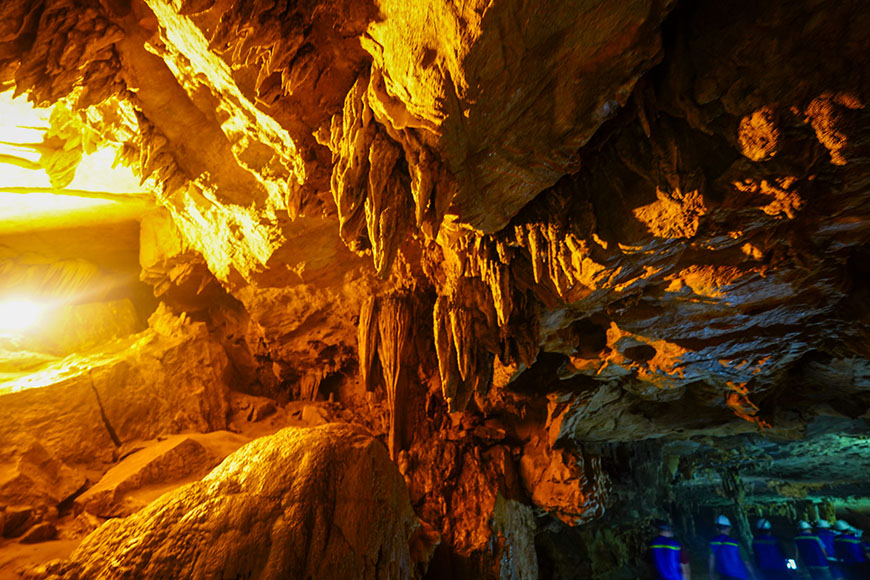Between ancestral traditions and natural wonders
Our journey through Cao Bằng province begins with an immersion in the heart of the Nung villages. Each hamlet is a showcase of ancestral know-how. In Phja Thap, the air is fragrant with the sweet smell of incense. Sitting beside a craftsman, I watch as he patiently shapes these fragrant sticks. Each gesture is precise, each movement an age-old dance. The dried and powdered keo leaves are delicately mixed with water before being impregnated into thin bamboo tubes. A mesmerizing spectacle that bears witness to ancestral know-how.
A little further on, it's the turn of the master papermakers to reveal their secrets. Keo bark, combined with animal fat, gives rise to a paper of remarkable finesse. The leaves are dried in the sun, glued to the walls of houses, then used to create counterfeit banknotes, burned as offerings to the ancestors.
Our final stop was a blacksmith's village, where we would also spend the night. Here, every house was equipped with metalworking tools and fires lit to fashion all manner of steel tools, many of them knives.
Into the heart of Tiger Cave
Our adventure continues in the mysterious Ngườm Ngao Cave, or Tiger Cave. Legend has it that this was once the lair of fearsome felines. Today, stalactites and stalagmites in fantastic shapes marvel visitors. The subdued light reveals magical underground landscapes, such as this giant lotus flower that seems to have grown in the bowels of the earth.

Bản Giốc Falls, a natural gem
Our tour concludes with a visit to the majestic Bản Giốc Falls. Located on the Sino-Vietnamese border, these impressive waterfalls offer a grandiose spectacle. The tumultuous water rushes into the void, creating an ephemeral rainbow. A moment suspended in time.

Village life
Evenings spent in the homestays are an opportunity to share precious moments with our hosts. Around a crackling log fire, we enjoy tasty local dishes and listen to our hosts' stories. Village life follows the rhythm of the seasons, simple and authentic.
Back to reality
Back in civilization, I think back on this unforgettable trip. Cao Bằng opened the doors to a little-known world, where ancestral traditions mingle with unspoilt wilderness.